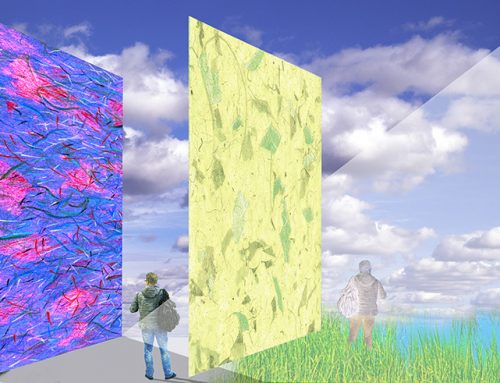Narrative Art
“Narrative art” is visual art that tells a story. It manifests itself in every kind of medium, in every culture. In every form that you can imagine”. So writes Don Bacigalupi, on the front page of the Lucas Museum website. Some have contended that “Narrative” art is a made up category and that artists don’t even know what that means. The Lucas museum is indeed more about mass media imagery, than it is about “art”, as in the traditional meaning of the term. The museum will surely have a narrative to tell, but it is debatable whether it is about “art”, some art critics say.
Types of narratives
Storytelling takes many forms: oral, written, performed and visual. But of all forms, the visual form is strongest. This is because visual images are able to instantly translate a message. Wikipedia lists several types of narratives: Simultaneous narrative, Monoscenic narrative, Continuous narrative, Synoptic narrative, Progressive narrative and Sequential narrative. The description of each type is beyond the scope of this article.
What is Narrative art?
As the name implies, any art that contains a “narrative” narrates or tells a story by means of imagery. Artists create narratives with their art, and the narrative can assume many forms. Subjects conveyed by narrative, are either of real historical events or imaginary fantasies. In either case, by creating a visual narrative, the artist presents his own unique interpretation of the subject. Narrative art is usually depicted in a defined space in which the artist chooses how to portray the story and represent that space.
Narrative art was more predominant in past generations. In the past, artists used mostly visual imagery rather than text because of the high level of illiteracy (the images told stories that people could not read).
There have been attempts to revive this so-called genre. In 1981, Hilton Kramer wrote in the NY Times. “…For the high culture of the modernist era, there was something suspect about straightforward narrative – to such an extent, indeed, that storytelling was often dismissed as a lowbrow interest. It was certainly not something with which an ambitious pictorial talent was any longer expected to be concerned…”. This statement which was true in 1981, still holds, and if anything, there are fewer painters today working in this genre.
Examples of Narrative art
In most cases, the best examples of “Narrative Art” have been “Representational” paintings. Any artwork which has recognizable imagery, tells a story. The power of a story is how and what it makes us feel. Images ignite imagination, evoke emotions and capture universal cultural truths and aspirations. We think you will see a bit of yourself in the collection—even in stories from long ago or depictions of worlds in the distant future. Some of the greatest works of art that can be classified as paintings with a narrative are:
“Sistine Chapel ceiling” – A masterpiece of art and a great example of narrative art can be found on the ceiling of the Sistine Chapel in the Vatican. Here, Michelangelo depicted nine scenes from the book of Genesis, in which “The creation of Adam” is the best-known portion.
“Primavera” – Botticelli depicted the coming of spring by means of Greek goddesses and nymphs.
“Guernica”- A painting in which Pablo Picasso narrated the events of the bombing of Guernica, a Basque Country village in northern Spain.
“Christina’s world” – Andrew Whyte’s narrative about a crippled woman.
Non-narrative art?
At the beginning of the 20th century, there was a major shift towards forms of art that had less of a narrative. Works of art no longer needed to serve a purpose, and artists began producing their art purely for aesthetics. Art became detached from any implicit narratives.
Art that does not have easily identifiable visual elements has less of a chance of being considered narrative art. Modern art may not be representational or metaphorical, but it is hard to claim that it does not have a story to tell at all. When paintings lack visual figurative elements, artworks cannot be clearly understood by the intended audience, and the narrative is in question. In modern art, most of the time the viewer himself creates the narrative.
A painting that is completely covered by red paint over the entire area may be a nice piece of decoration but is hardly transmitting a narrative. The only narrative that the audience can detect is the wish of the artist to create a piece of art devoid of a narrative. One can ask the question: Does a canvas painted all in red have a narrative? The answer is that it probably does, but that the viewer may find it difficult to interpret the narrative, if not for a title right next to the painting: “Red Blood”. Read also about “Abstract” on this Blog as some consider abstract painting as being “Non-Narrative”.
Education
Narrative art is a very important element that can be used to educate. Examples of narrative art can be used for example in slideshows by school art teachers. The art narratives which one generation leaves to the next in the form of paintings sculptures or writings is also highly valuable. Other posts of art educational value may be found in other blog posts. Most artworks in the gallery at artgreet.com are of the “Narrative art”. They have a message and a tell a story. To view the artworks please browse the Shop page.
Suggested reading:
“ART: Narrative Painting Struggles For a Rebirth” – Hilton Kramer, NY Times 1981
“There is no such thing as Narrative Art” – Paul Barolsky, Arion, College of Arts and Sciences Boston University
“Narrative and anti-Narrative” Tate Gallery
For other “Art” definitions read the Post “Art-101-Definitions” on the Blog.






